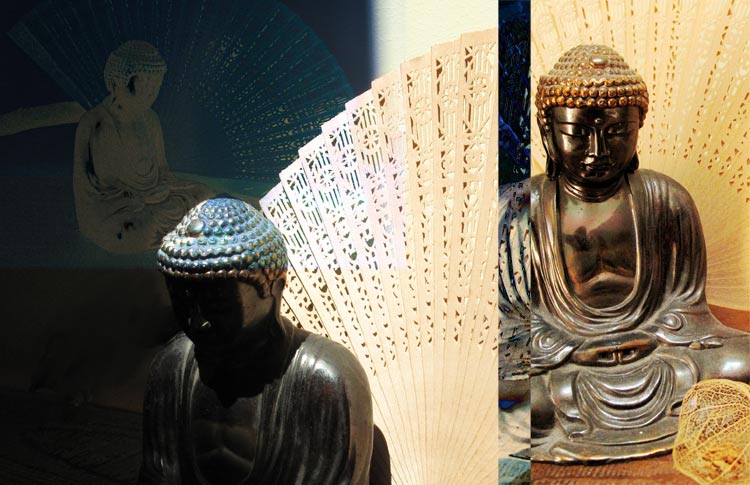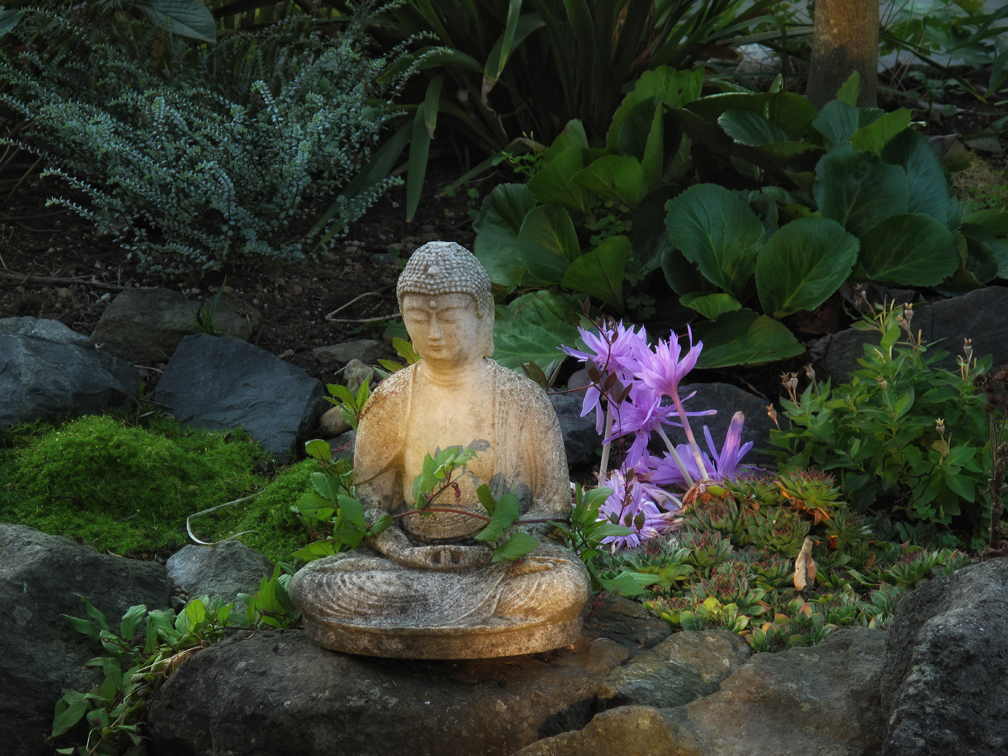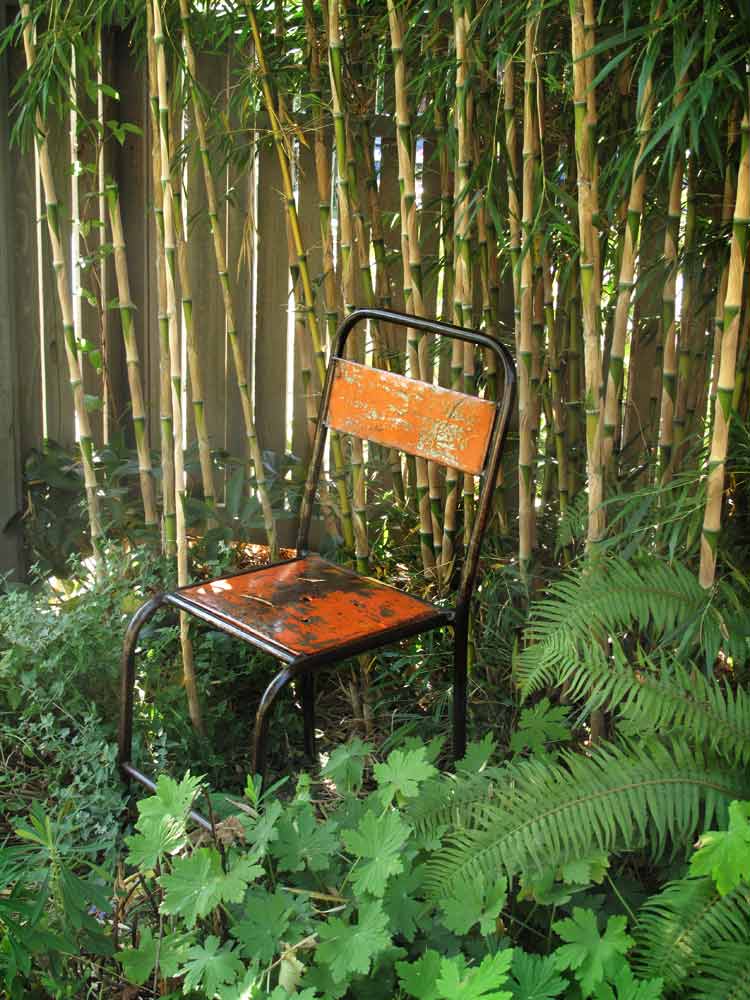
The Black Buddha, otherwise known as the “television Buddha” sat for years on my step-grandmother’s TV, his head unironically posed between two silver antennae. Even as a child who had not yet been taught the niceties of good taste I could tell that this statue, although hollow like my milk chocolate Easter bunny, was a Prince among objects. Where the black paint had rubbed away copper glinted. His robes had the sharp cast and sheen only found in metal, and when I picked him up and set him down I could tell he belonged to a different family of dolls.
At some point in my late teens, after reading a book or two by Alan Watts and becoming instantly hip and knowing, which I eagerly confused with being enlightened, it occurred to me that this object belonged in my life. Did I steal it? Did I stand in front of the television as though mesmerized by the cheap print of VanGogh sunflowers and off-handedly tuck the Buddha into my coat? I have a vague memory of light on a dusty window, of the pine tree outside, of family noise and clatter and a moment of rationalization. I hope I asked.
This Buddha has gone with me to every room I have lived in, presided over my inkstone and rice paper and the copying of sutras and 4 AM yoga sessions and detours into Gurdjieff, Guru Mai, and Yogananda. He has never gained or lost weight, or criticized me for being delusional, or asked for water, or offered a word of advice. For years at a time I have not actually looked at him; I’ve even lost him on occasion– buried in a box under the bed. Then I will find him and the fact of him starts all over again. The Buddha is a resonant object, and my mind changes when I look at him.
I puzzle over this quite a bit. What is this alchemy of the object? The historical and real person of Siddhartha, who became the Buddha, never asked to be made into a figurine. In fact the Buddha himself discouraged this as dangerous close-cousin to the worship of idols. Only the image of his footsteps was allowed or perhaps the trace of a wave on the shore, or a hand. Yet today I doubt that any Buddhist anywhere meditates without some image in their mind of –not the breathing, sweating actual human being — but the statue. Leave it to the Greeks to ruin a good thing, the void and the imagination, and to supplant it with idealized form. And now you can buy a guy in a robe with snails on his head anywhere, online next to blinking ads for a flat belly, or in an import store or from a catalogue full of clocks that wake you up with the sound of the ocean.
Through hundreds of years and thousands of places of manufacture, the significant details of the sitting Buddha rarely change. The graceful sloping of the shoulders, the relaxed ease and the simultaneous sense of absolute focus, the circuit of small spheres along the head. And form is important. The shape of the saints is common, but it is not ordinary. The power of shape is a mystery, devotional practice equally so.

I have a second Buddha, a pale gray version mass produced and bought at a nursery twenty years ago. He has sat long enough in my garden to acquire the iridescent sheen of actual snails across his knees. Together both statues, indoor and outdoor, do a fine job of gentle reproach as I plunder time and waste it in mindless daily orbit. You would think two would be enough. However, I was seized this spring with a sudden overwhelming desire for a new Buddha, something life-size. I became completely obsessed with the idea that a statue was waiting for me and I had to find it right now. So abandoning my other obligations for a day I scoured every Asian import store in the city. The closest I came to my imagined find was a graceful, stupefyingly beautiful Thai god (god of what, I’m not sure) made of fragile wood and $15,000.87 out of my price range. As I started to leave the shop, my obsession defeated, I noticed the chairs. Simple, magnetically so, projecting a deadpan stoic humor and covered with the patina of decades in an outdoor cinema. If one wanted a reminder to “sit” what could be more potent than a chair, after all? I sat. In spite of the barracks-style severity the chair was surprisingly comfortable. And you can bargain for chairs, although you would never bargain for a Buddha.

This is my new garden statue, for now. It lives in the bamboo reminding me to be still, to just sit.
__________________________________________
This is the first in an upcoming series of essays on Buddhist iconography in art and daily life. I will be featuring interviews with artists who work in a variety of contemplative paths, ranging from traditional devotional art to contemporary improvisations, in media ranging from painting and drawing to sculpture, music and video. If you are interested in the subject of the object as a source of contemplation you may want to visit the section of my blog that focuses on response to the book “A History of the World in 100 Objects.”